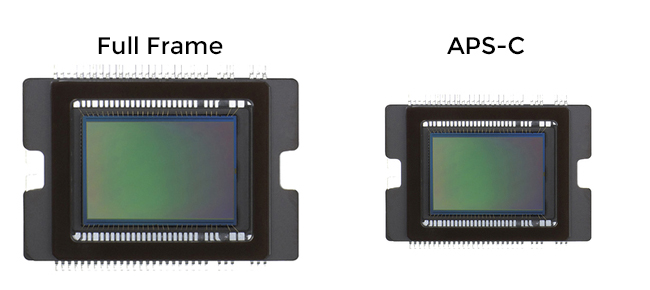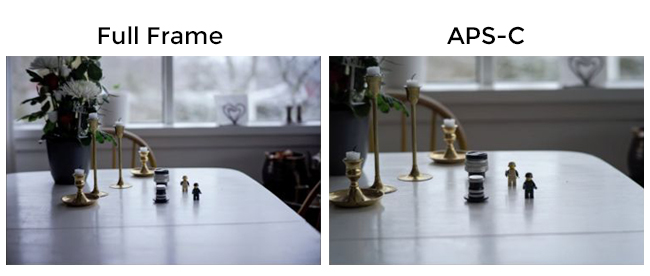Full Frame vs APS C: Do You Really Need a Full Frame Camera?
Full frame and APS C are basically the two type of sensors in a camera. A sensor detects and conveys information used to make an image. It does so by converting the variable attenuation of light waves as they pass through or reflect off objects, and the bigger the size, the more expensive the cost of production.
Full frame cameras use sensor sizes equivalent to a 35mm film (36×24mm); they are found in DSLR and mirrorless cameras which are expensive and bulky because of their frame quality. An APS C camera, on the other hand, stands for Advanced Photo System. This is a film format that was introduced in 1996, but was discontinued. APS film frames measure 16.7 x 30.2mm, but there are three different APS digital image formats, namely:
- H (high-definition)
- C (classic)
- P (panorama)
Note: All three are smaller than the original APS and 35-mm film size, hence the term ‘cropped sensor’.
Having described both APS C and full frame cameras, we’ll compare and contrast them based on their different features.
Cost
The full frame sensor camera is more expensive because of the larger sensor, while on the other hand, an APS C sensor is smaller in size and less expensive (budget friendly).
Quality of Image
Based on the quality of images produced, a full-frame camera is better, as it has a wider surface area to take in more light at ideally angled positions. However, an APS C camera can’t do this, as its sensor is smaller and offers a smaller range of angle view.
Depending on the resolution of the pixels and the technology associated with the device by the producers, an APS C camera may produce what the full frame camera is capable of.
Control Over Field Depth
Thirdly, regarding the ability to regulate or give a shallow depth of field (the zone of acceptable sharpness within a photo that will appear in focus), a full frame camera gives better depth of field control by distinguishing the focus from its environment. This can still be achieved with an APS C camera depending on the lens being used.
Furthermore, a full frame sensor camera has a more accurate focal length (because there’s no conversion/cropping of its image), but an APS C camera doesn’t have these capabilities due to cropping its images by stated dimensions. However, it does offer a deeper depth of field which is an advantage for landscape photography, as it gives a better foreground (the view closer to the camera) and background (the opposite of foreground) elements in focus at larger apertures. This is essential for high-quality landscape photography and resolution.
Related Articles
The Best DSLR Camera For Any Budget
YI Lite vs YI 4K: Which Is the Best Budget Buy?
The Absolute Best Micro Four Thirds Lenses 2019
Resolution
A full frame camera has a better resolution when compared to an APS C camera, but the cost for achieving this is higher. This is because of the cost of the lens, but if the same result is to be achieved by an APS C camera, it would be less expensive and give close to equal performance of a full frame sensor camera. It’s obvious that based on portability, full frame isn’t very portable while the APS C sensor camera is.
Conclusion
The cost of the products are major factors to consider when reviewing or comparing different products. An APS C camera would be my choice, contrary to the popular belief that what is expensive has some sort of added quality. But guess what, if you have the money to a buy full frame camera and can take advantage of the added benefits, then by all means, try out some of the premium photography options on the market.



